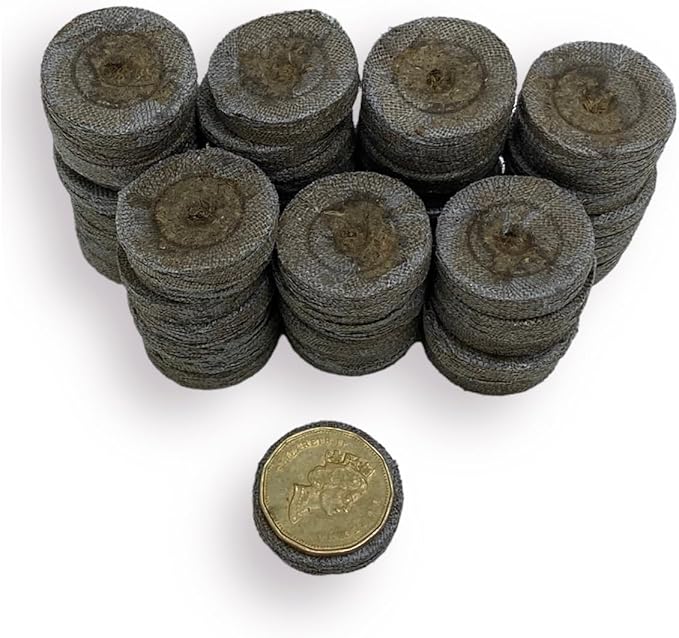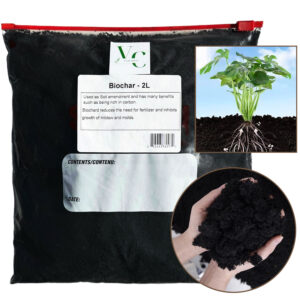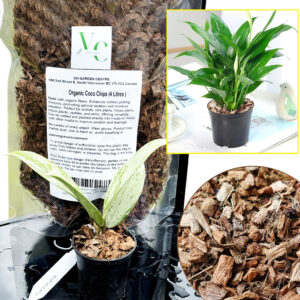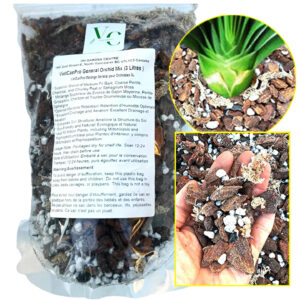Details
Peat pellets are small, a type of organic material that is often used in gardening and horticulture. These pellets are designed to expand when soaked in water, providing a convenient way to start seeds or propagate plants.
Here’s how they work:
- Compressed Form: The peat is compressed into small discs, often about 1-2 inches in diameter. This makes them compact and easy to handle and store.
- Expansion: When you add water, the peat pellets expand, typically growing several times their original size. This provides a small, moist environment ideal for starting seeds.
- Planting: Once expanded, you can plant seeds directly into the pellet. The pellets are usually placed in a tray or container, and because the peat moss is a good medium for holding moisture, they help keep seeds moist as they germinate.
- Transplanting: After the seedlings have developed roots and are ready to be transplanted, the entire peat pellet can be placed into soil or larger containers. The seedling remains in the pellet, which breaks down naturally over time.
Benefits of peat pellets
| Ideal for Germination | The pellets expand when soaked, providing a stable, moist environment ideal for seed germination. Because they are compact and absorb water, peat pellets can help maintain a consistent temperature around the seed, which can speed up germination. |
| Promotes Healthy Root | Airy and well-draining, providing a consistently damp environment that supports seedling development without drying out too quickly. |
| Easy transplanting | When it’s time to move your seedlings to a larger container or the garden, you can transplant the entire peat pellet. The roots can grow through the mesh of the pellet, but the pellet itself can decompose naturally in the soil, minimizing transplant shock and root disturbance. |
| Reduces Overwatering Risk | The pellets provide a buffer against overwatering because the water is absorbed evenly across the pellet. This helps prevent the seeds from becoming waterlogged, which can be a common problem with traditional soil. |
| Versatility | Peat pellets can be used for starting a wide range of plants, from flowers and vegetables to herbs and small shrubs. They are particularly useful for small, delicate seeds that need controlled conditions for germination. |
| Time-Saving | There’s no need to sift, mix, or add fertilizers to your growing medium. The pellets are pre-formed and ready to use once soaked. |
How to Use peat pellets
| Soak the Peat Pellets | Arrange the peat pellets in a shallow tray or any container that can hold them securely. They should be spaced apart to allow room for expansion. Pour warm (not hot) water over the pellets. The pellets will begin to expand almost immediately, so make sure you add enough water to cover them entirely. As the pellets expand, they should increase in height, typically to around 2-3 inches (5-7 cm). If the pellets don’t expand fully after a few minutes, add a bit more water. |
| Check the Pellets’ Condition | Once fully expanded, make sure the pellets are moist but not soggy. If there’s excess water in the tray, drain it off. You can gently break apart the top of the pellet with your fingers to ensure it’s loose and ready for planting. |
| Plant the Seeds | create a shallow hole in the center of each pellet (usually around 1/4 to 1/2 inch deep, depending on the size of the seed). Drop one or two seeds into the hole. It’s a good idea to plant only one seed per pellet to prevent overcrowding. For very tiny seeds, sprinkle them lightly on the surface. Gently push the peat around the seed to cover it, ensuring the seed is in contact with the damp peat. You can lightly press down to make sure the seed is seated properly. |
| Monitor for Germination | Germination time depends on the type of seed you’re growing. Check the seed packet for estimated germination times. Once most of the seeds have sprouted, you can remove the cover to reduce humidity. This helps prevent mold and fungus growth. If necessary, keep the seedlings in a warm spot with plenty of light. You may need to start introducing them to slightly cooler conditions as they grow. |
| Transplant the Seedlings | Once the seedlings have developed enough roots and are ready for transplanting, you can move them into a larger container or directly into your garden. The roots should be able to grow through the mesh of the pellet. You don’t need to remove the peat pellet when transplanting—it can be planted directly into soil. The pellet will eventually break down in the soil, providing some organic matter. |
| Additional Tips | If you plan to transplant seedlings outdoors, gradually acclimate them to outdoor conditions (a process called “hardening off”) by placing them outside for a few hours each day, increasing the time spent outdoors over a week. |
Additional information
| Quantity | 100 Pcs, 150 Pcs, 200 Pcs, 250 Pcs |
|---|---|
| Size | 30mm, 42mm |
Related products
-5%
$19.99
This product has multiple variants. The options may be chosen on the product page
-5%
-5%
-5%
-5%
-5%













